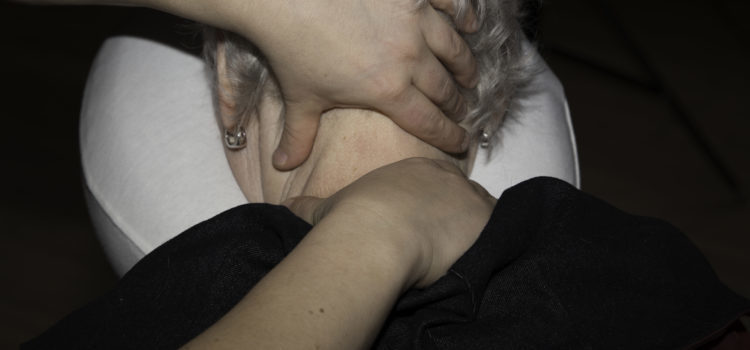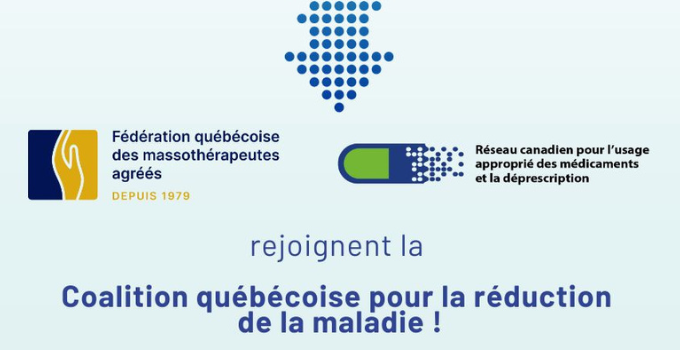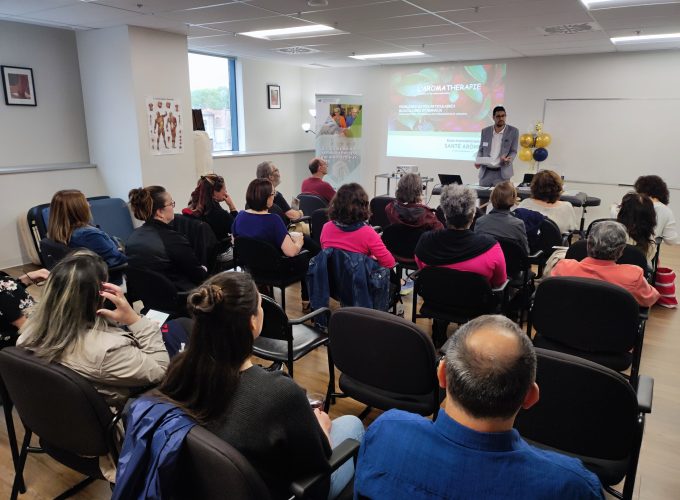 News, Newspaper
News, Newspaper
Massage therapy for people living with cancer
Cancer is the leading cause of mortality in Canada. Even if the survival rate has risen over time, cancer continues to wreak havoc wherever it exists. Can massage therapy help improve quality of life among people with cancer?
Cancer is a complex disease that occurs when cells form an amorphous mass and acquire the capacity to randomly multiply without end, giving rise to tumours.
The disease can occur in any bodily tissue or organ, from the blood to the skin, glands, bones and cartilage. It can be hereditary and is sometimes linked to external factors, such as smoking or ultraviolet rays.
In all cases, a cancer diagnosis can turn a person’s life upside down. And with it come treatments accompanied by side-effects, physical and psychological pain and, unfortunately, uncertainty and the possibility of eventual death.
People living with cancer often turn to complementary approaches to medicine in order to mitigate the symptoms of the disease and the side-effects of treatment. Among these approaches are meditation, yoga, and massage therapy.
The benefits of massage in the presence of cancer*
Numerous studies tend to confirm that adapted massage therapy provided by a well-trained massage therapist can offer benefits to people living with cancer. The following benefits have been observed:
- Reduced pain [1]
- Reduced anxiety [2]
- Reduced fatigue [3]
- Improved quality of life among patients with cancer-associated secondary lymphedema [4]
- Improved immune function [5][6]
It’s important to bear in mind that all cancer treatments must be personalized. The same holds true for massage, which must be adapted to the client’s health condition and needs. There are also contra-indications to massage practiced on people living with cancer. It is therefore important to consult a massage therapist with specialized training in massage therapy applied to people living with cancer.
*Massage therapy is meant to serve as a complementary therapy, which can help relieve the symptoms of a number of health conditions, including cancer, if adapted to an individual’s medical condition and administered by a competent, well-trained massage therapist. As part of a multidisciplinary approach, it should be provided in conjunction with other health disciplines (medicine, nursing science, physiotherapy, chiropractic, etc.).
What the research says
Pain is the most common and debilitating symptom observed among people living with cancer. An estimated 50% of individuals undergoing cancer treatment and 90% of people with end-stage cancer experience pain [7]. The following studies demonstrate the potential effectiveness of massage therapy in relieving pain among people living with cancer:
- In 2016, a systematic review and a meta-analysis of 16 randomized trials on pain among cancer patients concluded that massage therapy constitutes a promising means of easing pain and anxiety among this patient population, compared to other approaches, such as reading or periods of silence [8].
- The previous year, a meta-analysis of 12 studies demonstrated that massage significantly reduced pain associated with cancer, compared to the absence of massage or conventional care [1].
Specialists in support of people living with cancer
People dealing with cancer experience a range of emotions and physical changes. For this reason, they are often followed by a multidisciplinary team of health professionals. An oncology care team can thus include the following professionals:
- A psychologist can help a person living with cancer and their loved ones come to terms with their new reality. Do not hesitate to consult a psychologist if you feel the need.
- Cancer treatments are often associated with undesirable gastro-intestinal side-effects. A nutritionist can help the person living with cancer adapt their diet accordingly.
- Occupational therapist. An occupational therapist can help the person with cancer adapt their daily life accordingly, thereby allowing them to keep up their activities more easily. In order to consult an occupational therapist, click here.
Cancer statistics
- Cancer is responsible for 30% of all deaths in Canada.
- One in two Canadians will be diagnosed with cancer in the course of their lifetime.
- One in four Canadians will die of cancer.
- The most common types of cancer are lung, breast, prostate and colorectal cancers.
To find out more
- Canadian Cancer Society
- Fondation de la massothérapie
- Massage techniques
- Find a massage therapist specialized in working with cancer patients
[1] Lee, S. H. et coll. (2015). Meta-analysis of massage therapy on cancer pain. Integrative cancer therapies, 14(4):297-304.
[2] Campeau, M. P. et coll. (2007). Impact of massage therapy on anxiety levels in patients undergoing radiation therapy: randomized controlled trial. Journal of Society for Integrative oncology, 5(4):133-138.
[3] Karagozoglu, S. et Kahve, E. (2010). Effects of back massage on chemotherapy-related fatigue and anxiety: Supportive care and therapeutic touch in cancer nursing. Applied Nursing Research, 26(2013):2010-2017.
[4] Institut national d’excellence en santé et en services sociaux. (2011). Traitement du lymphœdème secondaire lié au cancer [PDF]. Repéré à https://www.inesss.qc.ca/fileadmin/doc/AETMIS/Rapports/Cancer/INESSS_resume_lymphoedeme_FR.pdf
[5] Hernandez-Reif, M. et coll. (2005). Natural killer cells and lymphocytes increase in women with breast cancer following massage therapy. International Journal of Neuroscience, 115(4):495-510.
[6] Billhult, A. et coll. (2009). The effect of massage on immune function and stress in women with breast cancer – A randomized controlled trial. Autonomic Neuroscience, 150(1-2):111-115
[7] Lesage, P. et Portenoy, R. K. (1999). Trends in cancer pain management. Cancer Control, 6(2):136-145.
[8] Boyd, C. et coll. (2016). The impact of massage therapy on function in pain population – A systematic review and meta-analysis of randomized controlled trials: Part II, cancer pain population. Pain Medicine, 17(8):1553-1568.




